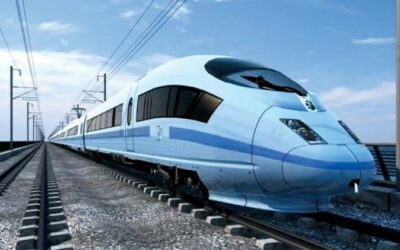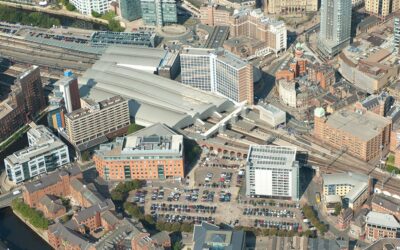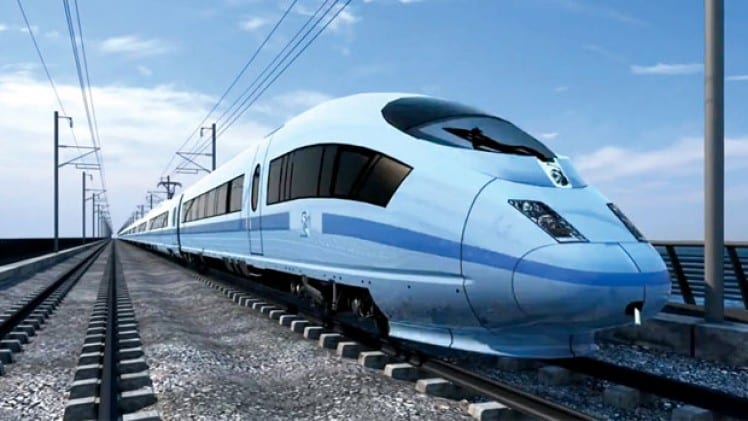A new railway connecting Liverpool and Manchester could kickstart a £90bn economic transformation across the North West – and help reshape how major infrastructure is delivered in the UK – say its advocates.
Regional leaders are today setting out proposals for a new Liverpool-Manchester Railway that would deliver jobs, growth and regeneration across the North West, while offering a new, more effective model for building big projects: Led locally, delivered faster, and designed around communities.
Mayors Steve Rotheram and Andy Burnham, alongside former Rail Minister Huw Merriman, civic and business leaders from across the North West, are urging the government to work in partnership on the plans. A firm commitment now, they argue, would allow construction to begin in the early 2030s, giving certainty to investors and helping retain the skilled workforce built up through the delivery of HS2.
The new report outlines the case for the new line, which would run from Liverpool Lime Street to Manchester Piccadilly, with stops at a new Liverpool Gateway station, Warrington Bank Quay and Manchester Airport. It estimates that construction of the railway could deliver a £15bn boost to the economy and create 22,000 jobs.
But the impact goes far beyond the route itself and construction benefits. The railway would be one component of the Northern Arc, an emerging economic corridor stretching from the Mersey to the Pennines and beyond. Recent analysis by Metro Dynamics suggests that, as part the Arc, securing the growth trajectory of Greater Manchester, Cheshire and Warrington and Liverpool City Region area could add £90bn in cumulative GVA to the UK economy by 2040 and double the size of the region’s economy in less than 30 years.
Despite being shorter than either the Elizabeth Line or East-West Rail, the proposed line would punch well above its weight – freeing up local rail capacity, slashing journey times and bringing more than half a million extra people within 30 minutes of Liverpool and Manchester city centres.
The report also outlines a fresh approach to infrastructure delivery, rooted in local knowledge, supported by private investment, and shaped by the latest technology. It draws lessons from past national schemes and proposes a locally-led model that avoids delays and delivers better value for money.
Huw Merriman chairs the Liverpool-Manchester Railway Partnership Board, an expert board advising on how best to deliver the project. Together they are calling for the line to feature in the government’s upcoming 10-Year Infrastructure Strategy, and for ministers to back such a new collaborative model for delivery.
The plans include five new ‘growth opportunity areas’ around each of the stations – Liverpool Lime Street, Liverpool Gateway, Warrington Bank Quay, Manchester Airport and Manchester Piccadilly – designed to support new homes, jobs and regeneration ahead of the railway’s arrival. Together, the zones could unlock up to 500,000 homes and tens of thousands of jobs along the railway corridor.
Steve Rotheram, Mayor of the Liverpool City Region, said: “Two centuries ago, the Liverpool-Manchester Railway changed the world – kickstarting the railway age and powering a revolution in trade, travel and opportunity. Today, we have the chance to do it again. Our new line forms part of a wider vision to unlock £90bn of economic growth, and 500,000 new homes – the kind of transformation our region, and our country, desperately needs.
“There’s hardly a person in the North who hasn’t felt the frustration of slow, unreliable journeys or missed out on things because of creaking, outdated infrastructure. For them, this is far more than just building a new railway – it’s about opening the doors to opportunity. Connecting people to better jobs, unlocking new homes, and making it easier to enjoy everything our region has to offer – from concerts and football to family and friends.
“We’re putting forward a serious, deliverable plan that does things differently – developing plans at a regional level instead of a top-down approach. Not cap in hand, but shoulder to shoulder with government. We’re offering a new way of doing things: faster, fairer, and better value. With the right backing, we can get spades in the ground in the early 2030s and deliver the world-class railway we deserve.”
Andy Burnham, Mayor of Greater Manchester, said: “Just over 200 years ago, the world’s first passenger railway was built to connect Liverpool and Manchester, transforming the nation’s fortunes for centuries. But Victorian infrastructure is now acting as a brake on both on growth.
“A new Liverpool-Manchester Railway would be shorter than both London’s Elizabeth Line and East West Rail connecting Oxford and Cambridge, but would punch well above its weight in both growing the UK’s economy and better connecting our high-growth sectors.
“For too long, such major infrastructure projects in the UK have been delivered in a top-down way. We want to work hand-in-hand with government to plan and deliver this railway from the ground up, enabling us to maintain our growth momentum for Greater Manchester. A new, locally-led delivery model will mean we can build our pipeline of regeneration, new homes, skilled jobs and green growth around the rail line with real certainty.”
Other backers of the plans include Manchester Evening News editor Sarah Lester and Liverpool Echo editor Maria Breslin, who came together to issue a joint statement:
“Today, two great Northern cities and two historic Northern brands are coming together to call on the government to fully finance a vital fast train route between Liverpool and Manchester – starting to correct years of unfair funding to transport infrastructure in the North West.
“It is absurd that Manchester and Liverpool are just 40 miles apart but a journey between the two is rarely straightforward.
“This plan has the potential to supercharge the economy of the North West and wider regions and link together two of the UK’s great cities.
“It will bring potentially life-changing opportunities to those who live in Manchester and Liverpool, creating jobs, and driving regeneration in the way the Elizabeth Line has done in London.
“It is unprecedented for the Echo and the MEN to come together in this way but we feel the potential benefits to the region outweigh any traditional rivalries.”












